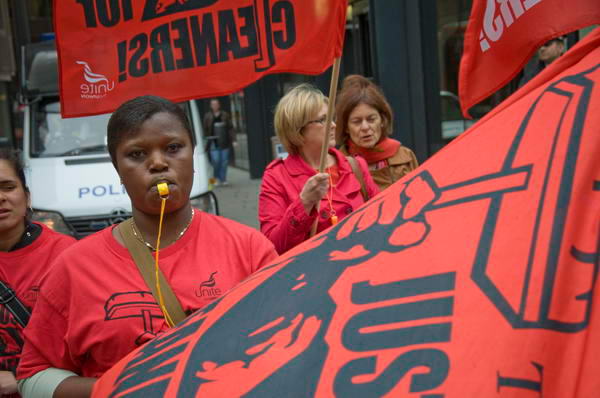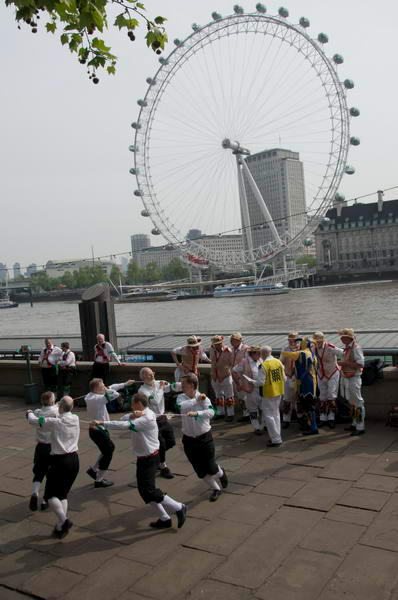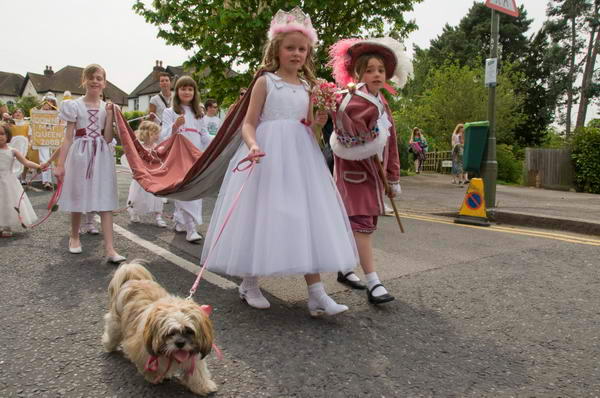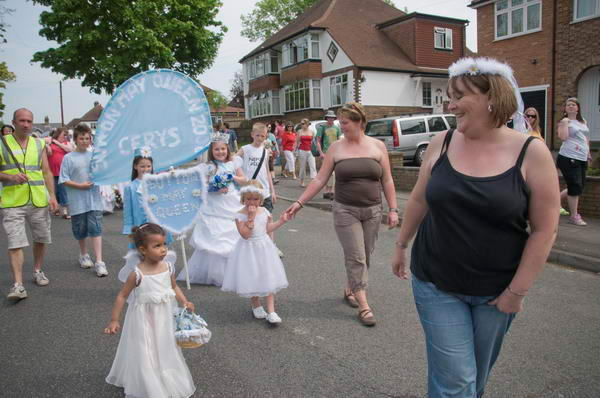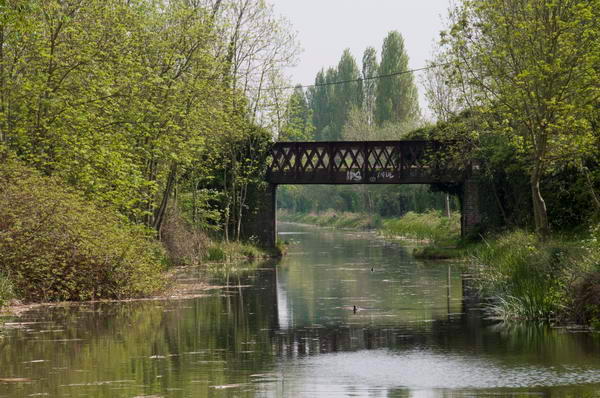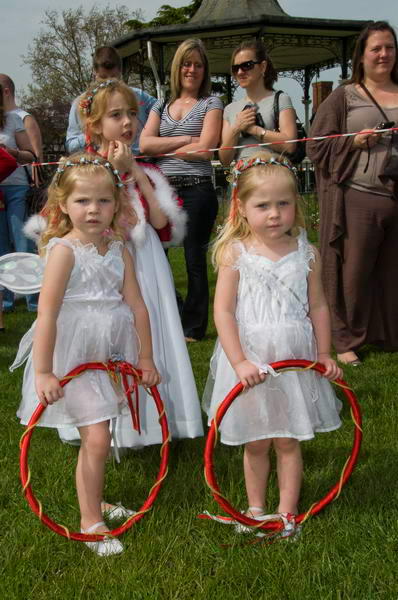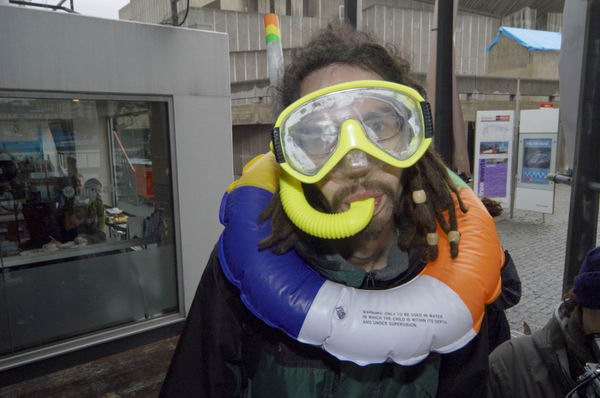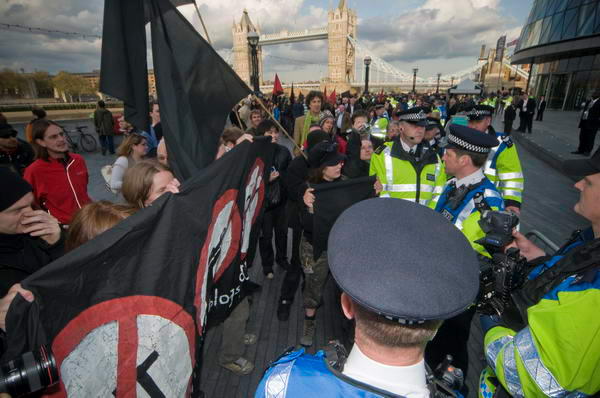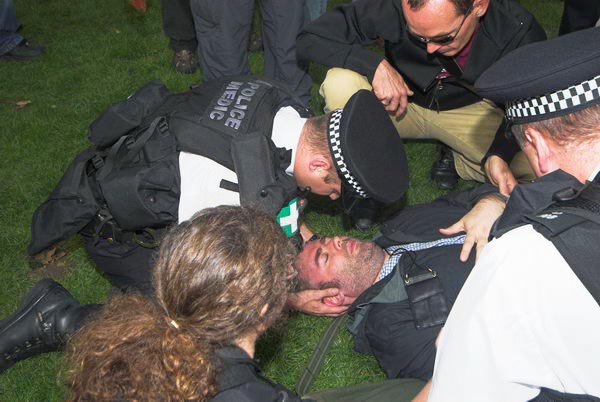I usually like going to exhibition openings at Photofusion, though more often it’s the people I meet there that make it interesting than the pictures on the wall. Photofusion is very much a photographers gallery and most of the people at openings have a real interest in the medium. Its also a much more friendly place that most galleries, one where you can talk to strangers and meet new people, as well as bumping into old friends and acquaintances.
If anyone doesn’t know, Photofusion is London’s largest independent photography resource centre with a full range of facilities and services for pros, amateurs and students. Members can work in a well-equipped digital suite (or for the retro, darkrooms) hire a studio attend courses and events at reasonable rates, and Photofusion’s picture agency represents the work of many photographers whose work deals with social and environmental issues – including some of my own.
It’s also very handily placed in Brixton, 2 minutes walk from both the Victoria line tube and Overground station. When I did a project on people on buses Brixton was one of my favourite places to work, because there were just so many buses and people. I dropped in to Photofusion last night on my way back from photographing in the centre of London, a fifteen minute journey by tube.
The current exhibition, Changing Spaces, (until 21 June, 2008) has work by five photographers, Laura Braun, Mandy Lee Jandrell, Isidro Ramirez, Simon Rowe, Gregor Stephan and is a part of the Urban Encounters programme, a collaboration between Photofusion and the Centre for Urban and Community Research at Goldsmiths (part of the University of London, based at New Cross.) Curated by Paul Halliday and Catherine Williams, this also includes a conference, talks and workshops.
The show aimed to present different approaches by photographers to urban spaces, and is one of the more interesting currently on view in London, although I find some of the writing about it more than opaque. Here’s a short chunk:
Laura Braun’s move towards sub-urbanisation in the mid 1900s, show social and public spaces devoid of the photographs of Downtown Los Angeles, the once glamourous heart of the city, side-lined and in decline since the pressure of people however with the traces of their passing intact.
This certainly isn’t English as we know it, and must surely be the output of some deranged computer programme that strings together random phrases in an attempt to demonstrate artificial intelligence. But doubtless it will be clear to speakers of Acadamese.
Two projects of the five appealed particularly strongly. One was by Isidro Ramirez who gained a BA on the Editorial Photography course at the University of Brighton in 1998 and an MA in Photography and Urban Cultures at Goldsmiths in 2006. His pictures in the project What We Don’t See are of spaces in which blind and visually impaired people live and work, and show a fine sense of both space and light. I think they reveal considerably more about how the photographer sees than about how those who inhabit the spaces perceive them. Keeping spaces relatively open and uncluttered is of course essential when vision is limited, as we found when my late father-in-law used to stay in our untidy home.
Simon Rowe worked with Francesca Sanlorenzo and Ben Gidley of Goldsmiths on the 2004 Pepys Portrait Project. His work on show is “part of a larger project about the Pepys estate, present a portrait of a South East London housing estate as it moves into a new era. The project reflects a sense of the multiplicity of human and social relationships against a background of social change and regeneration.” Both this text and his pictures are models of clarity and show a real feeling for the people and place.
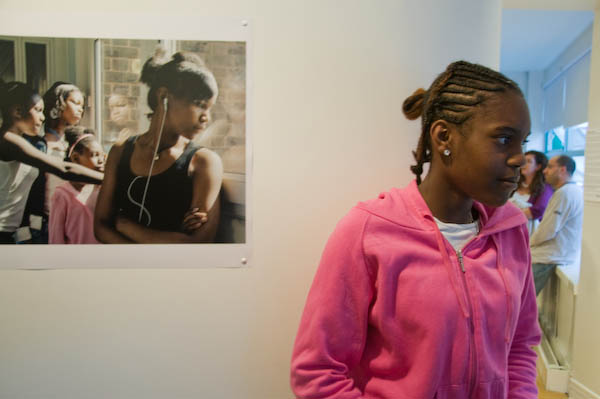
Some of the people in Simon Rowe’s pictures were at Photofusion for the opening
The Pepys estate in Deptford was built by the GLC, (Chief Architect Ted Hollamby,) in the 1960s on a prime 45 acre site next to the Thames to provide over 1,300 homes. Opened by Lord Mountbatten of Burma in July 1966, it was lauded at the time as a landmark in social housing, and gained a Civic Trust award.

Pepys Estate, 1982 (C) Peter Marshall.
By the 1980s, when the estate was handed over to Lewisham Council, the buildings had deteriorated through poor upkeep and the estate had become known for crime, vandalism and drugs. Problems were confounded by those of language, with many asylum seekers being housed there.
Regeneration started in the early 1990s, mainly refurbishing existing buildings, but came to a halt in 1998, with six blocks on the prime riverside sites not completed. Lewisham engaged in complex and highly doubtful moves, against considerable opposition from Pepys tenants, finally resulting in Aragon tower being refurbished as a private block by Berkley Homes (handy yuppy flats for over-paid workers at Canary Wharf) and the five low rise blocks being replaced by 250 new homes by Hyde Housing Association.
